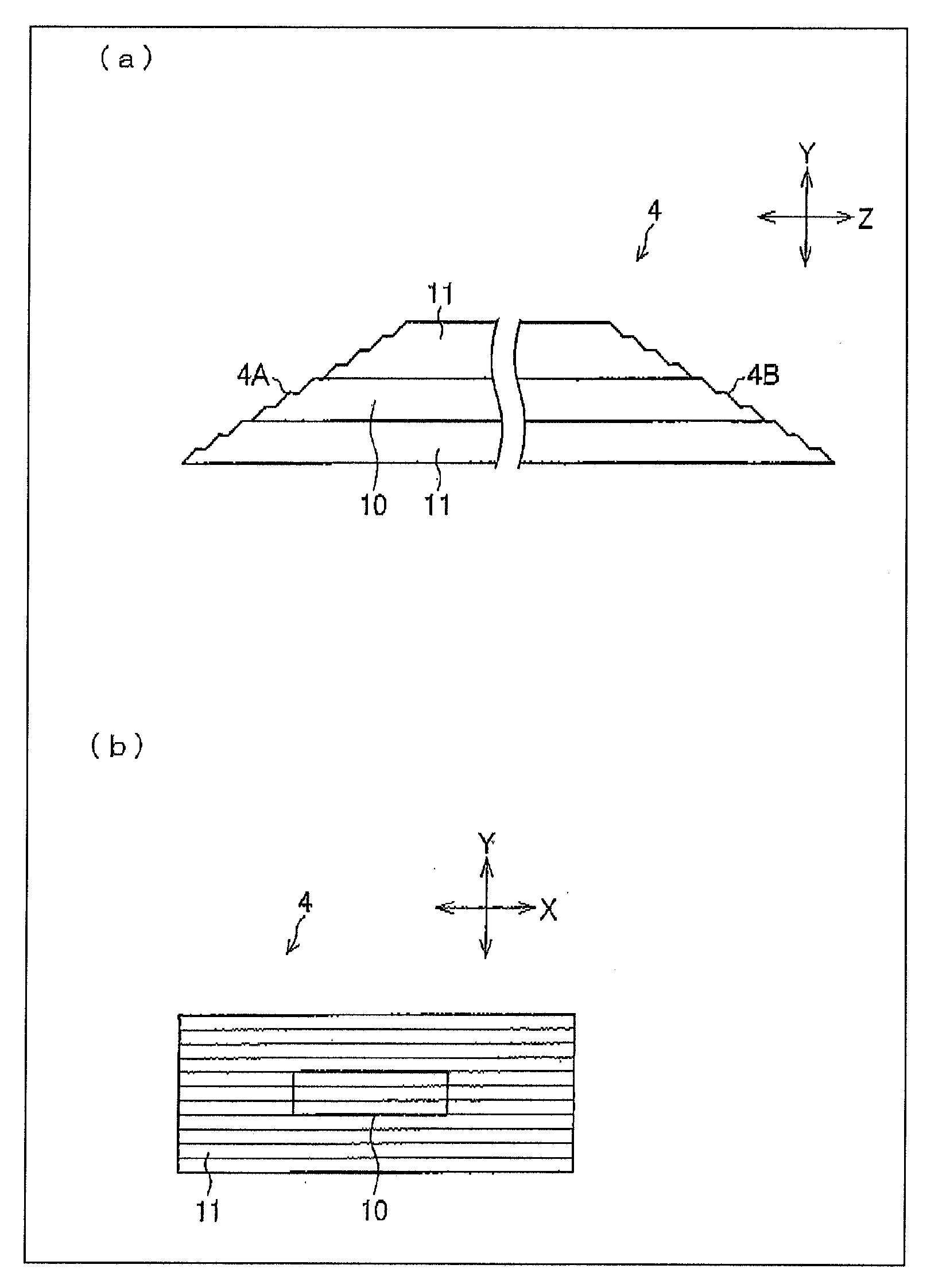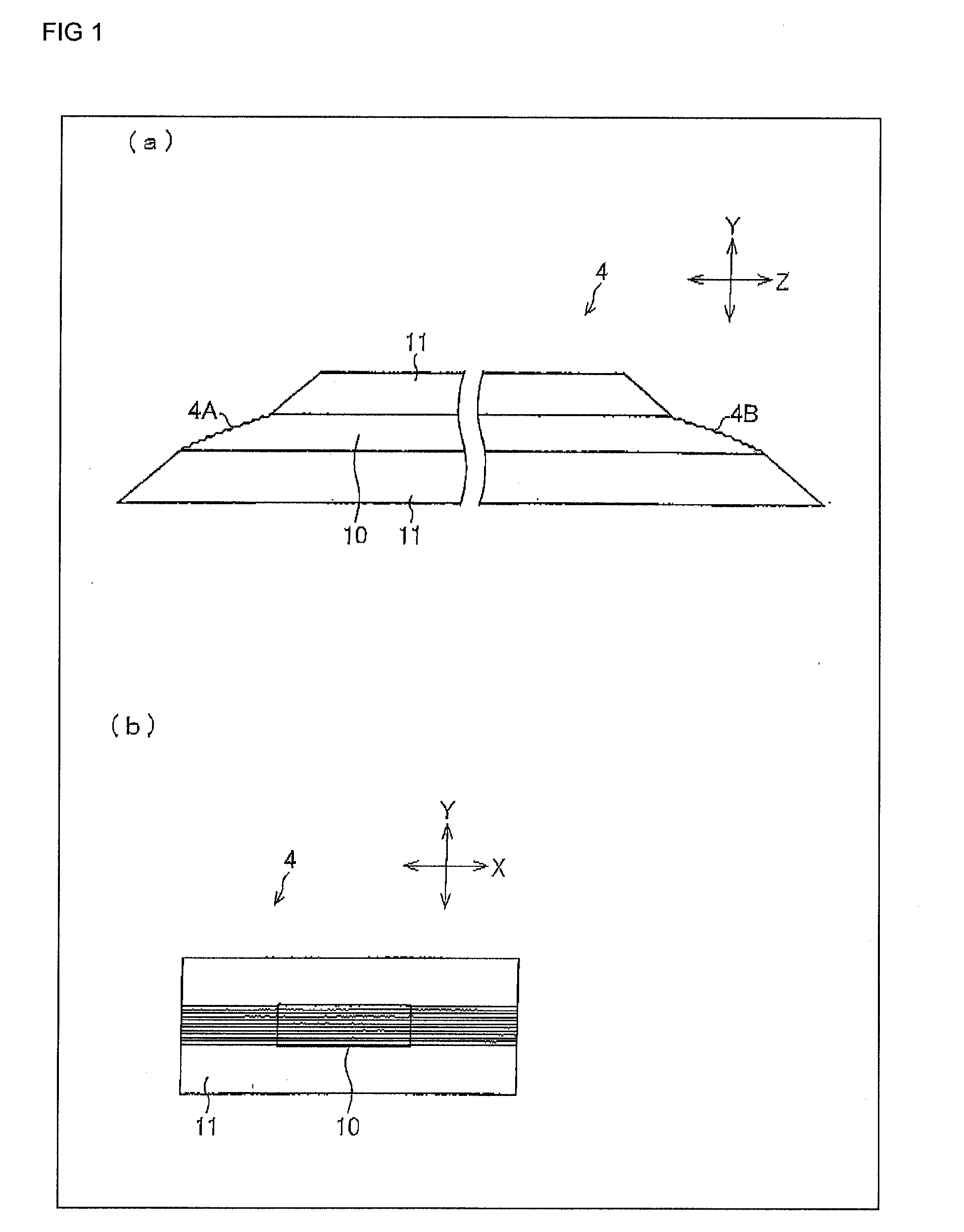Optical waveguide, optical waveguide module, and electronic apparatus
a technology of optical waveguide and light guide, which is applied in the direction of fixed installation, lighting and heating apparatus, instruments, etc., can solve the problems of increasing coupling loss, increasing coupling loss, and reducing the light quantity of the light received by the light receiving portion, so as to achieve stable light transmission, suppress the fluctuation amount of light loss in light transmission, and stable light transmission
- Summary
- Abstract
- Description
- Claims
- Application Information
AI Technical Summary
Benefits of technology
Problems solved by technology
Method used
Image
Examples
application example
[0142](Application Example)
[0143]The light guide 4 of the present embodiment can be applied to the following application examples.
[0144]First, as a first application example, use can be made at a hinge portion in a foldable electronic device such as a foldable portable telephone, a foldable PHS (Personal Handyphone System), a foldable PDA (Personal Digital Assistant), and a foldable notebook computer.
[0145]FIGS. 16(a) to 16(c) show an example in which the light guide 4 is applied to a foldable portable telephone 40. In other words, FIG. 16(a) is a perspective view showing an outer appearance of the foldable portable telephone 40 incorporating the light guide 4.
[0146]FIG. 16(b) is a block diagram of a portion where the light guide 4 is applied in the foldable portable telephone 40 shown in FIG. 16(a). As shown in the figure, a control unit 41 arranged on a body 40a side in the foldable portable telephone 40, an external memory 42, a camera (digital camera) 43, and a display unit (liq...
PUM
 Login to View More
Login to View More Abstract
Description
Claims
Application Information
 Login to View More
Login to View More - R&D
- Intellectual Property
- Life Sciences
- Materials
- Tech Scout
- Unparalleled Data Quality
- Higher Quality Content
- 60% Fewer Hallucinations
Browse by: Latest US Patents, China's latest patents, Technical Efficacy Thesaurus, Application Domain, Technology Topic, Popular Technical Reports.
© 2025 PatSnap. All rights reserved.Legal|Privacy policy|Modern Slavery Act Transparency Statement|Sitemap|About US| Contact US: help@patsnap.com



